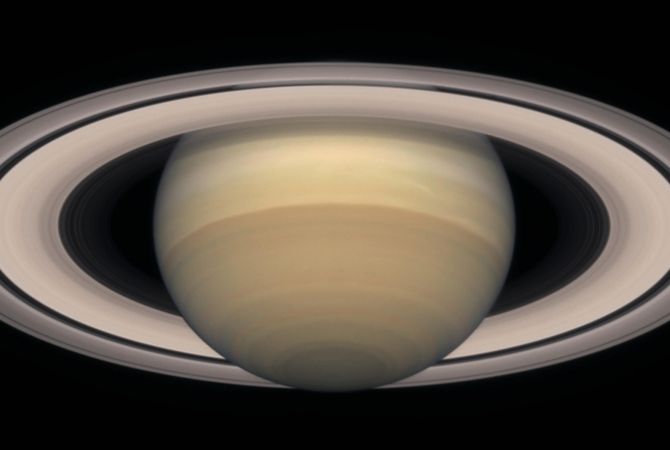Credit & Copyright: Hubble Heritage Team
(AURA /
STScI)
R.G. French
(Wellesley College),
J. Cuzzi (NASA/Ames),
L. Dones (SwRI),
J. Lissauer (NASA/Ames)
Explanation:
Born on today's date in 1564,
Galileo used a telescope to
explore the Solar System.
In 1610, he became the
first
to be amazed by Saturn's rings.
After nearly 400 years,
Saturn's magnificent rings still offer
one of the most stunning astronomical sights.
Uniquely bright
compared to the rings of the
other gas giants,
Saturn's ring system is around 250 kilometers wide but in places only
a few tens of meters thick.
Modern astronomers believe
the rings
are perhaps only a hundred million years
young.
But accumulating dust and dynamically interacting with
Saturn's
moons, the rings may eventually darken and sag toward
the gas giant, losing their lustre over the next
few hundred million years.
Since Galileo, astronomers have subjected
the
entrancing rings to intense scrutiny to unlock their secrets.
Still mesmerized, some will take advantage of next week's
(February 20th) favorable lunar occultation of Saturn
to search for evidence
of ring material outside the
well known boundaries
of the ring system.
The presence of such a "lost" ring of Saturn was first
hinted at in reports
dating back
to the early 20th century.
1999 2000 2001 2002 2003 2004 2005 2006 2007 2008 2009 2010 2011 2012 2013 2014 2015 2016 2017 2018 2019 2020 2021 2022 2023 2024 2025 |
Yanvar' Fevral' Mart Aprel' Mai Iyun' Iyul' Avgust Sentyabr' Oktyabr' Noyabr' Dekabr' |
NASA Web Site Statements, Warnings, and Disclaimers
NASA Official: Jay Norris. Specific rights apply.
A service of: LHEA at NASA / GSFC
& Michigan Tech. U.
|
Publikacii s klyuchevymi slovami:
Saturn - rings - Galileo - Saturn - kol'ca Saturna - Galileo Galilei
Publikacii so slovami: Saturn - rings - Galileo - Saturn - kol'ca Saturna - Galileo Galilei | |
Sm. takzhe:
Vse publikacii na tu zhe temu >> | |
